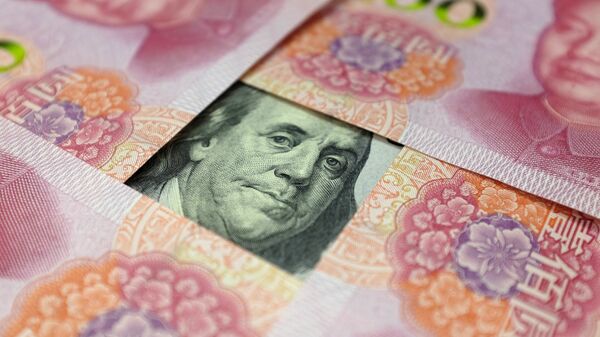For the first time ever, Chinese-minted assets, bonds and currency have become the number one foreign assets in the Russian Central Bank’s foreign exchange reserves, a new report by the Russian regulator has revealed.
According to the figures, Russia has invested the equivalent of some $65 billion in Chinese-denominated assets as of the end of the first quarter of 2019, with this figure amounting to 13.4 percent of its total reserves.
By total value, the Chinese denominated assets were second only to Russia’s own assets – consisting of monetary gold held in the regulator’s vaults, which amounted to 18.2 percent of total reserves.
Germany, France, and Japan rounded out the top five other foreign countries whose assets Russia is invested in, accounting for 13.2 percent, 11.6 percent and 10.2 percent of forex holdings, respectively. The US, which accounted for a whopping 29.2 percent of the Russian Central Bank’s total holdings just a year and a half ago, slipped to sixth place by March 2019, accounting for 9.2 percent of the total.
The UK, foreign organizations, the Netherlands and Canada rounded out the top ten basket of foreign assets held in Russia’s reserves, accounting for 5.9 percent, 4.3, 2.5 percent and 2.3 percent, respectively. Another 9.3 percent of the Bank’s reserves are held in the assets of other countries.
Russia has gradually dumped its dollar-denominated assets, including investments in US national debt, with a large-scale selloff starting in the spring of 2018, when dollar-denominated assets were the long-running number one foreign asset in the Central Bank’s reserves. Over the past two years, Russia has dramatically shaved its US bond, currency and other dollar-denominated holdings from over $92 billion in December 2017 to $12.136 billion as of April 2019, with investments slashed further to $10.848 billion by June.
China is Russia’s largest trade partner, with total trade turnover growing by nearly 30 percent in 2018 and reaching the dollar equivalent of about $107 billion. This summer, Russia’s ministry of economic development said the countries may well top $200 billion in trade annually in the coming years.
In addition to its forex holdings, Russia has been stockpiling gold, amassing some 2,217.68 tonnes of the precious metal by late July, and augmenting its total gold holdings by well over 100 tonnes since the start of 2019. According to World Gold Council figures, Russia’s gold reserves are now comparable in volume to those of Italy and France (2,451.8 tonnes and 2,436.1 tonnes, respectively) whose holdings are ranked as the third and fourth largest in the world.



